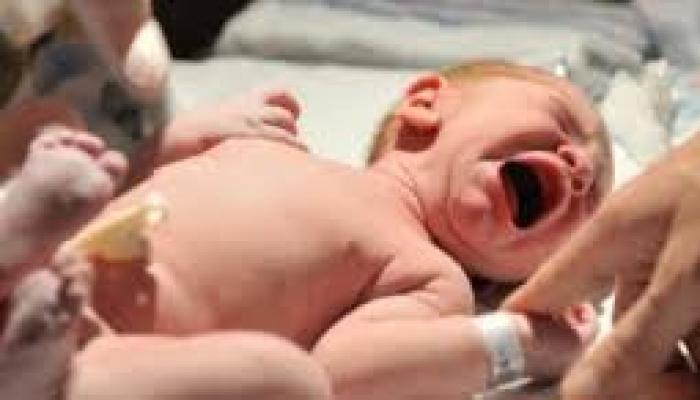The birth rate in Cuba, which had been in the mid-20s per one thousand of the population during the 1950s, climbed to the mid-30s in the years immediately following the Cuban Revolution. Starting in the late 1960s it declined to reach a low of 14 per one thousand in 1980, one of the most rapid declines on record. And the most recent statistics show that, today the problem is still a grave one.
While observers have often attributed the fertility decline to modernization over the last two decades, some look for a more complex explanation in which baby boom and bust arise both from objective factors in social and economic trends and subjective factors related to public consumption aspirations and expectations.
In this view, the baby boom was a response to the economic achievements and social welfare reforms of the early years of the revolution and the feelings of optimism they engendered in the public. The subsequent dramatic downturn in fertility was a response to deteriorating economic conditions culminating in the Special Period after the collapse of the Soviet Union.
To bring us up to date, the population in Cuba fell by 84,000 by the end of 2012 due to emigration and the country's low birth rate, according to Cuban officials.
The exact figures, the daily Granma reported, are that The Cuban population fell from over 11,247,000 in 2011 to just over 11,163,000 in 2012. The Cuban population is forecasted to decline to less than 11 million by 2032.
The data confirms warnings made previously by experts at the National Office of Statistics that the country would experience a "sharp decrease" in population, according to vice president of the Council of Ministers, Marino Murillo.
The Granma newspaper report confirms that Cuba - where abortion was legalized in 1965 – is most definately facing an aging populace. By 2025 some 2.9 million Cubans will be over 60, a million more than at present, making this the oldest population in Latin America, with the consequent impact on productivity and the cost of pensions and health services.
Studies by The Latin American and Caribbean Demographic Center indicate that along with aging reduced fertility is a chief causes of the continued decline in the Cuban population.
All this is exacerbated by the so called Cuban Adjustment Act, approved by the US Congress back in 1966 and implemented by Washington to promote illegal emigration from the Island.
Cubans are the only Latin Americans who enjoy a special act approved in Washington which automatically grants U.S. residence to any Islander that arrives in U.S. soil by illegal means.
No other citizen of any other nation in the world, in Latin America or elsewhere, is favoured with such a liberal benefit, hoped for by millions around the globe: that of unchallenged US residence.
This reality has also added to the undesirable demographics, with official data provided by the National Bureau of Statistics (NBS) showing about 38,000 Cubans, excluding illegal emigrants, leave the island every year to reside abroad.
So here we have it! The most recent population census in Cuba reveals that 18.3% of the Island’s population is sixty years of age or over. This is largely due to social policies of the Cuban Revolution, that have improved the lot of the population. There is little hunger or disease in Cuba, whose citizens are covered by a public health system unparalleled in this Hemisphere, including the United States with the elimination of traditional diseases that took early lives before.
Free medical attention covers the right of women to give birth at will and has extended life expectancy to levels unparalleled in any other nation of Latin America and the Caribbean.
Low birth rates have added to the number of over sixty. Therefore, the Island is obliged to introduce measures to foster increased birth rates to counter the increase in life expectancy and the efforts of the US Government to promote illegal emigration of high level technicians, experts, doctors and other health personnel an university graduates in general.
Granma newspaper has reported on high-level committees comprising ministers and heads of concerned agencies, set up to draft a comprehensive and long-term strategies, taking into account economic, social, cultural and biological factors that affect birth rate and seniors.
The government has allocated $58 m in its 2013 economic plan to finance 30 programs aimed at improving senior care and boosting birth rate.
These programs include measures to provide help for infertile couples and update childcare centers, to boost birth rate and to revamp senior care homes, provide annual health check for seniors and purchase walkers, collars, wheelchairs and other equipment to improve senior care.
Granma acknowledged that there is a tendency for married couples to have less children due to the country's difficult economic conditions.
The demographic problems will take toll on Cuba's welfare, national defense, health services and labor force, the newspaper stressed. By 2021, more Cubans will be leaving the workforce than entering. Cuba has recently allowed retirees to return to work and still collect their pensions.
Low fertility rate and aging population entail a rising share of the elderly. The aging will pull down potential economic growth as it reduces the number of productive population and pushes up costs for senior care. This is the face of the challenge.
Good news was gladly received in Cuba in 2103 when there was an increase in the number of live births as a result of the progressive reduction to minimum levels of infant mortality, the lowest in Latin America. But life expectancy, at the other end of course, continued to increase.


